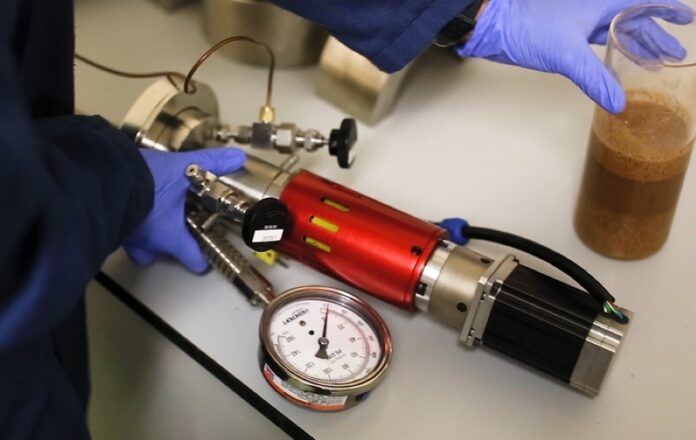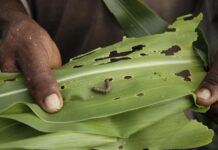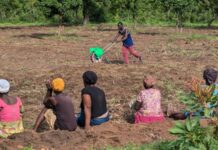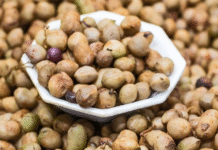A recent study by Bedru et al. (2025) titled “Efficient Biomass Fractionation via Organosolv for Sustainable Bioenergy Production: A Comprehensive Review,” published in the International Journal of Chemical Engineering, reveals that organosolv fractionation significantly enhances the conversion of biomass into high-purity components like cellulose, hemicellulose, and lignin.
“
Organosolv fractionation significantly improves biomass conversion into high-purity cellulose, hemicellulose, and lignin, supporting sustainable bioenergy production and a circular bioeconomy.-Bedru et al. 2025
The article explores the use of organosolv fractionation as a clean and efficient method for biomass pretreatment. It highlights how this process enhances biomass conversion into bioenergy and bio-based chemicals while adhering to green chemistry principles, such as solvent recovery and recycling.
Biomass, consisting of materials like agricultural residues and forestry by-products, is presented as a renewable and carbon-neutral energy source. However, its complexity and the challenges of separating its main components—cellulose, hemicellulose, and lignin—necessitate efficient pretreatment methods. The article emphasizes that organosolv fractionation, which uses organic solvents for selective component separation, achieves high purity results and supports sustainable energy goals.
The authors also compare this method to traditional pretreatment techniques, addressing its advantages and challenges, such as high operating costs and difficulties in scalability. It provides a comprehensive analysis of recent research, practical applications, and the role of organosolv fractionation in advancing the circular bioeconomy.
How the Study was Conducted
The study employed a systematic review methodology to analyze the efficiency of organosolv fractionation in biomass pretreatment. Researchers conducted a comprehensive search of scientific databases like Web of Science, Scopus, and Google Scholar, focusing on articles published between 2000 and 2024. They used specific keywords such as “organosolv fractionation,” “biomass pretreatment,” and “bioenergy” to identify relevant studies.
Out of over 600 initial articles, a rigorous screening process narrowed the selection to 191 evidence-based studies. These studies were chosen based on their detailed methodologies and relevance to organosolv fractionation for bioenergy applications. The review also included quantitative analyses of performance metrics like recovery yields, solvent recycling efficiency, and component purity. This approach allowed the researchers to provide a comprehensive evaluation of organosolv fractionation, highlighting its potential for sustainable bioenergy production and its challenges, such as high operating costs and scalability issues.
What the Authors Found
The authors found that organosolv fractionation significantly enhances the conversion of biomass into high-purity components like cellulose, hemicellulose, and lignin. These components can be further processed into bioenergy and other value-added products, such as biopolymers, adhesives, and bio-based chemicals. They emphasized that this method aligns with green chemistry principles by facilitating solvent recovery and recycling, contributing to a circular bioeconomy.
Why is this important
This study is important because it addresses pressing global challenges, such as climate change, energy security, and resource sustainability. Organosolv fractionation offers a cleaner, greener way to utilize biomass for bioenergy and bio-based products, reducing our reliance on fossil fuels and lowering greenhouse gas emissions.
By aligning with green chemistry principles, such as solvent recovery and recycling, this approach supports a circular bioeconomy. It not only benefits the environment but also has potential economic advantages by creating valuable products like biopolymers and adhesives.
Furthermore, as the global demand for sustainable energy sources grows, innovations like organosolv fractionation are crucial for advancing renewable energy technologies and building a low-carbon future. This makes it a cornerstone of the transition towards a more sustainable world.
What the Authors Recommended
- The authors emphasized the need for further research to reduce the high operating costs and improve solvent recovery, which are current limitations of the process.
- The study suggested optimizing process parameters to enhance sustainability and cost-efficiency and addressing the challenges related to the scalability of the process is critical for its industrial application.
- The authors pointed out the potential of incorporating organosolv fractionation into integrated biorefineries to support a transition toward a low-carbon energy system.
- In addition, the authors recommended focusing on the recovery and recycling of solvents to align with the principles of a circular bioeconomy.
In conclusion, organosolv fractionation stands out as a highly efficient and sustainable method for biomass pretreatment, offering a cleaner pathway for bioenergy production and bio-based chemical synthesis. By enhancing the separation of high-purity cellulose, hemicellulose, and lignin, this process aligns with green chemistry principles, promoting solvent recovery and reducing environmental impact. While challenges such as high operating costs and scalability remain, continued research and technological advancements could pave the way for its broader industrial adoption. As the global demand for renewable energy grows, innovations like organosolv fractionation will play a vital role in building a low-carbon, sustainable future.
















 The African Research (AR) Index is a comprehensive scholarly directory and database focused explicitly on journal publishers that publish and disseminate African research.
The African Research (AR) Index is a comprehensive scholarly directory and database focused explicitly on journal publishers that publish and disseminate African research.

